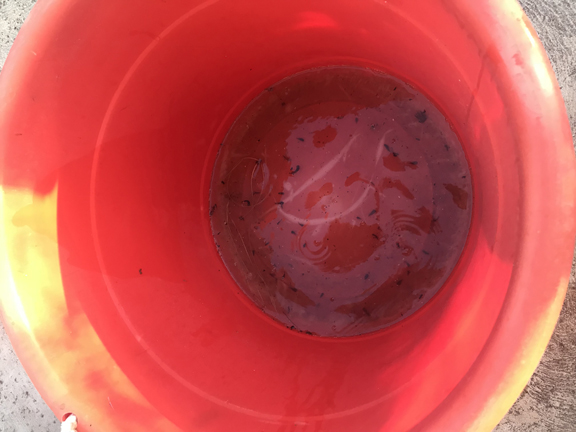
Standing water, like that commonly found in containers left outside, are attractive to mosquitoes that can carry the West Nile virus.
By Mary O’KEEFE
According to the California West Nile website, to date there have been 19 reported human cases of West Nile virus in the state, seven reported as recently as last week. Of those 19 cases, four were in Los Angeles County, specifically the San Fernando and San Gabriel Valley regions. This number is down from the prior five-year average but the number of infections is expected to increase in upcoming weeks. Mosquito pools and dead birds continue to test positive throughout Los Angeles County and nationwide 39 human cases have been reported to the Centers for Disease Control and Prevention (CDC), according to Los Angeles Public Health.
West Nile virus is normally spread to people by mosquito bites. Mosquito season, according to the CDC, is from summer to fall. Most people who are infected with West Nile do not have any symptoms, about one in five develop a fever and other symptoms and about one in 150 who are infected develop serious, sometimes fatal, illness.
West Nile is a leading cause of severe infections of the nervous system among adults older than age 50 in LA County, according to the LA County Dept. of Public Health.
West Nile virus was first discovered on the East coast of the U.S. in 1998. It is carried by migrating birds, then by mosquitoes that bite the birds, which continue the spread of the infection. The virus made its way to California in 2003, said Kelly Middleton, director of communications for the Greater Los Angeles County Vector Control District.
The best way to prevent contracting West Nile virus is two-fold; the first is making certain there is not a place for mosquitoes to breed. The easiest way for residents to do this is to check for standing water in and around their yards. The second line of prevention is wearing mosquito repellent.
“You can’t just trust any repellent,” Middleton said.
The CDC recommends a few on-skin products and clothing including: DEET (chemical name for N,N-diethyl-m-toluamide or N, N-diethyl-3-methyl-benzamide). Some products that contain this ingredient are Off, Cutter, Sawyer and Ultrathon. Picaridin (KBR3023) has also shown to be effective. Products that have this ingredient include Skin So Soft Bug Guard Plus and Cutter Advanced. Another ingredient the CDC suggests is oil of lemon eucalyptus, which is found in Repel and Off! Botanicals. Pure oil of lemon eucalyptus is not recommended because it has not undergone extensive testing.
Middleton said there are some natural oils that are used as repellents though they might have some issues.
“The problem with natural oils is they don’t work very long; lemon grass and rosemary may work for 10 or 15 minutes,” she said.
As of Monday, an additional 10 samples of mosquitos collected from six San Fernando Valley communities were confirmed positive for West Nile virus. These mosquitoes were collected from Encino, Northridge, Panorama City, Porter Ranch, Sherman Oaks and Van Nuys.
Middleton stated with the new positive samples and human infections the “time to start taking this seriously is now.”
It is not just West Nile that is of concern, either.
“Another [infection] is St. Louis encephalitis,” Middleton said.
Like West Nile virus, the St. Louis encephalitis virus is also spread to people by a mosquito bite. Although most cases have occurred in the eastern and central part of the country, Middleton said, they are watching it move this way.
“We have found St. Louis encephalitis in Coachella Valley,” she said.
Like West Nile, many people who are infected with St. Louis encephalitis virus show no symptoms. For some, they do present symptoms, including fever, headache, nausea, vomiting and tiredness. Severe neuroinvasive disease (often involving encephalitis, an inflammation of the brain) occurs more commonly in older adults. In rare cases, long-term disability or death can result. There are neither vaccines to prevent St. Louis encephalitis virus nor are there medications to treat it, according to the CDC.
Middleton said annually the County would see hundreds of cases of West Nile.
“We know this is just the tip of the iceberg,” she said.
The Greater LA County Vector Control District works throughout the year to actively search for and manage water-holding areas, such as gutters, ditches and storm drain channels, as well as focusing on private property where mosquitoes can breed.
For more information, residents can contact the Greater LA County Vector Control District at (562) 944-9656 or visit www.glacvcd.org.
